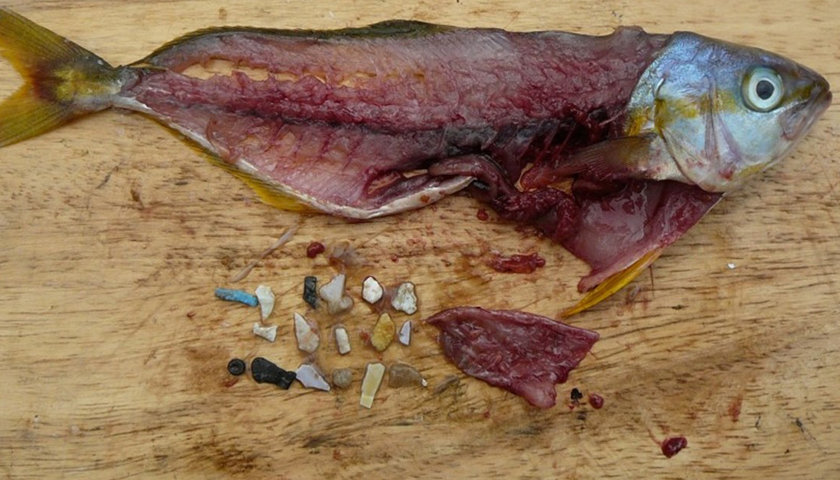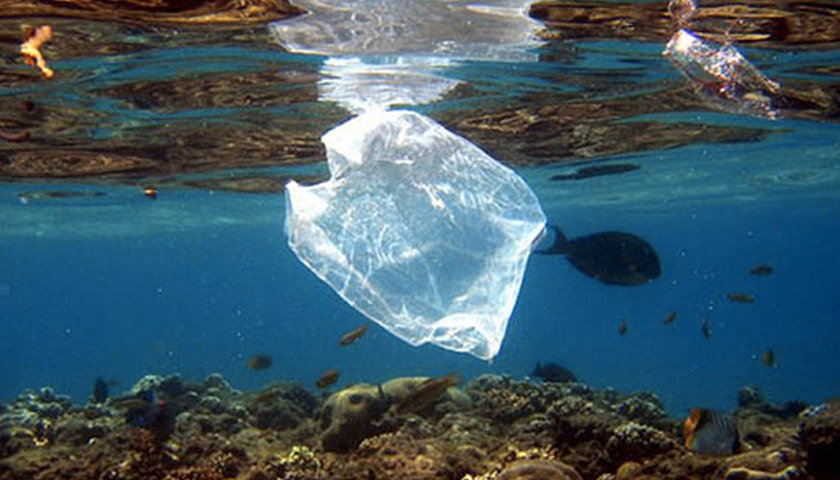
The Fish You Eat May Contain Plastic Microparticles
by Yash Saboo June 11 2018, 4:42 pm Estimated Reading Time: 2 mins, 30 secsA day or two ago my Twitter feed was filled with tweets from WWF, Dodo and the UN with headlines which said: "By 2050, there will be more plastic than fish in the world’s oceans." I know there is a lot of plastic in the world’s oceans but the possibility of oceans containing more plastic than fishes is both shocking and saddening.
Plastic thrown in oceans coagulates into great floating ‘garbage patches’ that cover large swaths of the Pacific. It washes up on urban beaches and remote islands, tossed about in the waves and transported across incredible distances before arriving, unwanted, back on land. It has wound up in the stomachs of more than half the world’s sea turtles and nearly all of its marine birds, studies say. And if it was bagged up and arranged across all of the world’s shorelines, we could build a veritable plastic barricade between ourselves and the sea. But that quantity pales in comparison with the amount that the World Economic Forum expects will be floating into the oceans by the middle of the century.

Source : CSIRO
A report commissioned by the WWF for World Oceans Day (June 8) says fish are eating toxic microplastics – tiny amounts of plastic – which could end up on our holiday plates. Plastic microparticles are getting into the flesh of fish eaten by humans. If we keep producing (and failing to properly dispose of) plastics at predicted rates, plastics in the ocean will outweigh fish pound for pound in 2050, the non-profit foundation said in a report.
A team of scientists from Malaysia and France discovered a total of 36 tiny pieces of plastic in the bodies of 120 mackerel, anchovies, mullets and croakers. They warned that as plastic attracts toxins in the environment, these poisons could be released into people’s bodies after they ate the fish. The plastics found included nylon, polystyrene and polyethylene.
Writing in the journal Scientific Reports, the researchers said: “The widespread distribution of microplastics in aquatic bodies has subsequently contaminated a diverse range of aquatic biota, including those sold for human consumption such as shellfish and mussels. Therefore, seafood products could be a major route of human exposure to microplastics."

Source : TrendinTech
The researchers suggested that the level of contamination should be monitored.
“The increase in plastics disposal coupled with their continuous fragmentation is expected to increase microplastic concentrations over time. As such, it will become increasingly important to regularly assess microplastic loads in seafood products, including dried fish. Given the fact that dried fish are often consumed as a whole, they may be responsible for the translocation of a significant amount of microplastics into the body of consumers.”
Other studies have suggested that shellfish could be an even greater source of microplastic in the human diet. The researchers noted that it had been estimated that “top European shellfish consumers” might consume up to 11,000 microplastic pieces a year.




-173X130.jpg)
-173X130.jpg)
-173X130.jpg)
-173X130.jpg)
_(1)-173X130.jpg)

-173X130.jpg)
